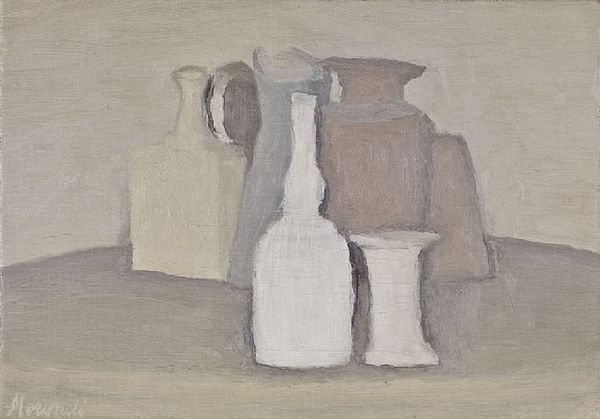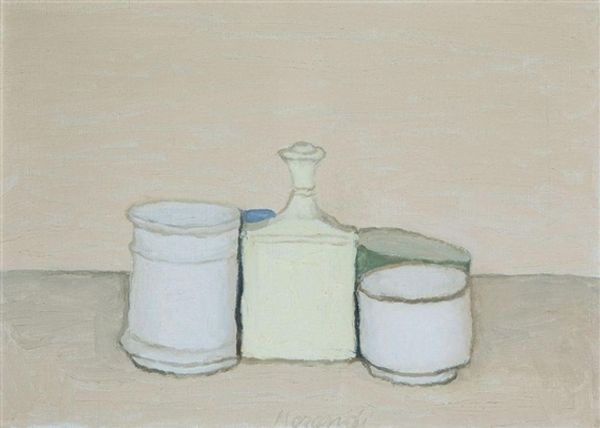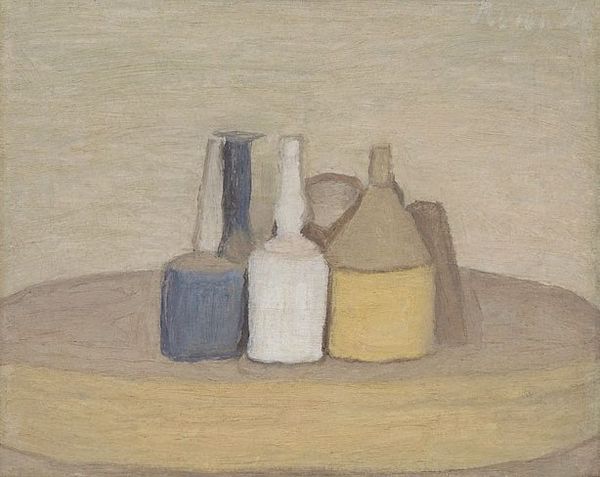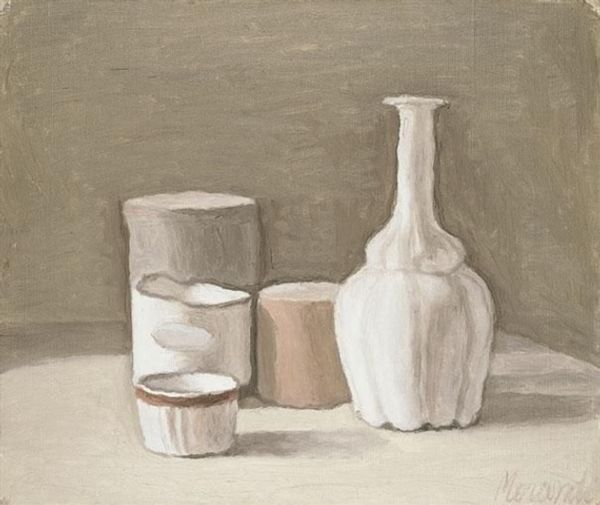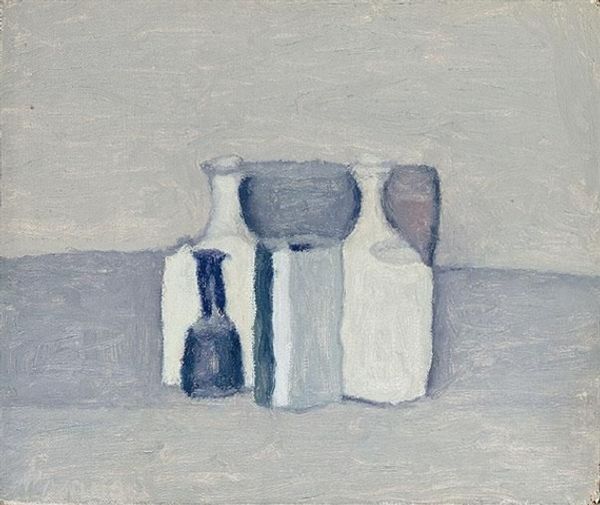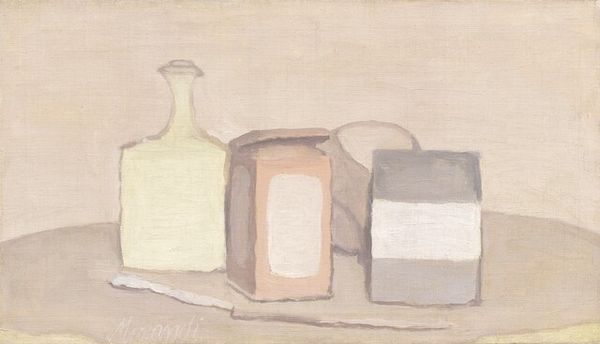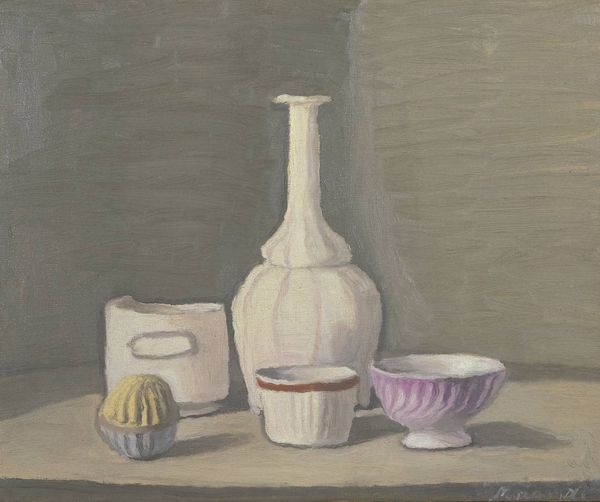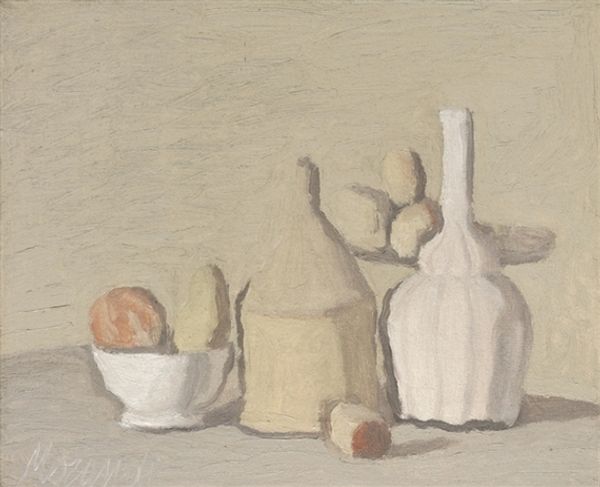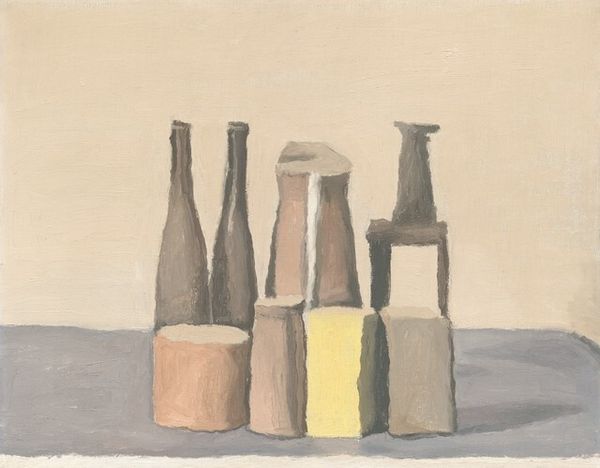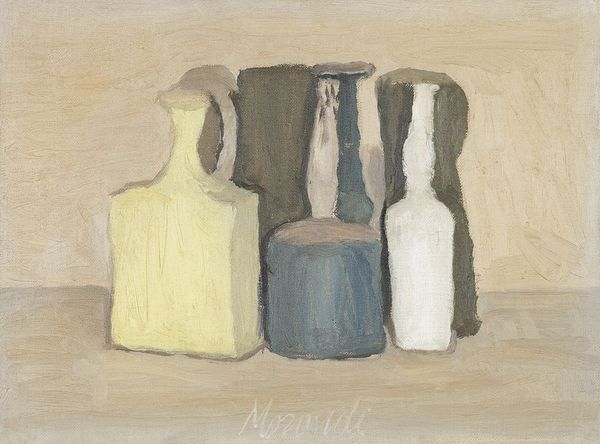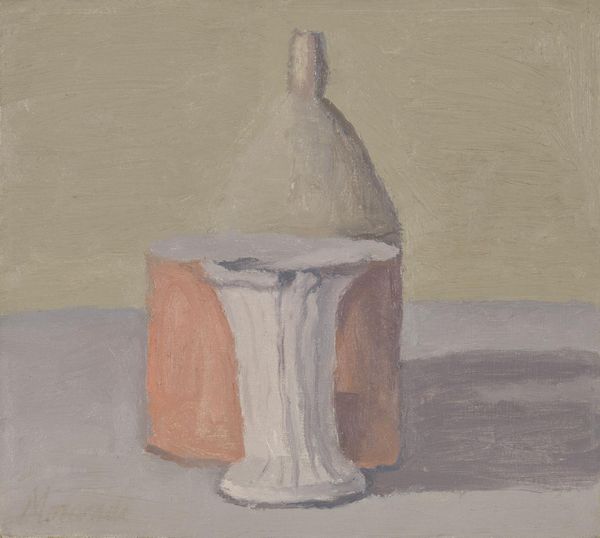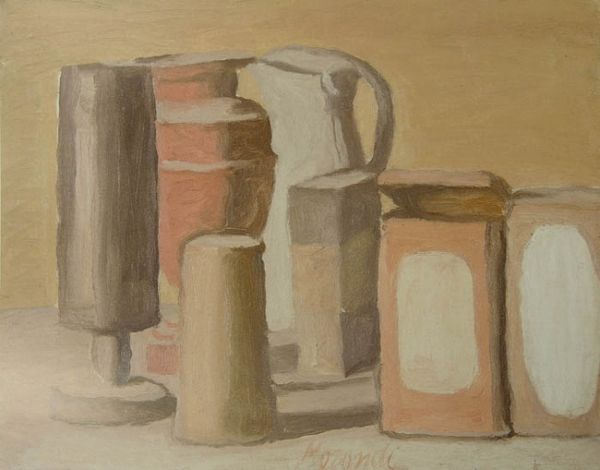
painting, oil-paint, impasto
#
still-life
#
painting
#
oil-paint
#
charcoal drawing
#
oil painting
#
impasto
#
italian-renaissance
#
modernism
Copyright: Giorgio Morandi,Fair Use
Editor: Right, let's talk about Giorgio Morandi's "Still Life with Flask," painted in 1953. It's an oil painting, and what strikes me immediately is the muted color palette, the almost dreamlike quality of these commonplace objects. What do you see in this piece? Curator: I see a deliberate engagement with the history of still life painting. Morandi's compositions, though seemingly simple, are steeped in a socio-political context. Think about Italy in the post-war period; there’s a desire to return to order and tradition. His muted colors and repetitive forms could be interpreted as a reaction against the avant-garde movements that preceded him, a quiet assertion of Italian artistic identity. Have you considered the role of museums and galleries in shaping how we view these works? Editor: That’s fascinating. I hadn't explicitly considered the post-war context. So, the sparseness isn’t just aesthetic, but almost a statement? It also feels like the piece doesn't draw attention to itself, a counterpoint to the grand narratives. Curator: Exactly. Museums often elevate certain artists and movements, thereby dictating artistic value. But Morandi operates outside that grand narrative. He’s choosing everyday objects, domestic settings. These paintings subtly question the art world’s obsession with spectacle. Do you think Morandi is questioning how imagery functions publicly? Editor: I suppose he is! I see how the everyday objects challenge traditionally valued subjects. I wonder about how this piece reflects its historical context differently, displayed today? Curator: Precisely! It urges us to contemplate how meanings shift as cultural and political landscapes evolve. It also allows one to observe art with contemporary concerns. Editor: That’s given me a completely new perspective on Morandi. I came in seeing muted tones but now recognise social meaning! Curator: And that interplay between personal artistic intention and institutional interpretation is the beauty of art history!
Comments
No comments
Be the first to comment and join the conversation on the ultimate creative platform.
